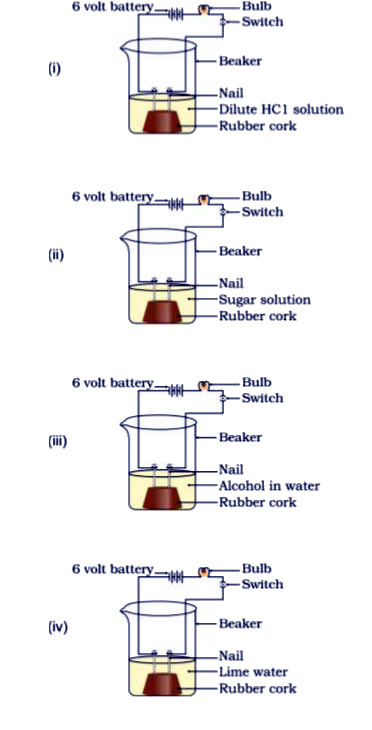In which of the following circuits will the bulb glow
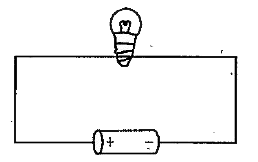
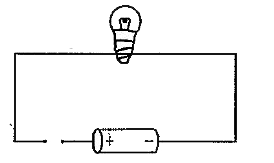
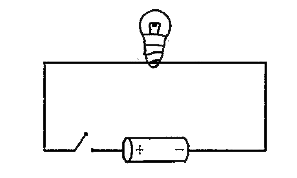
none of these
The correct Answer is:A
To determine in which of the given circuits the bulb will glow, we need to analyze each circuit based on whether the circuit is complete or incomplete. A complete circuit allows electric current to flow, which is necessary for the bulb to glow.
1. Understanding the Circuit Components:
- A circuit typically consists of a power source (like a battery), wires, and a load (like a bulb). For the bulb to glow, the circuit must be complete, allowing electric current to flow from the power source through the bulb and back to the power source.
2. Analyzing Option 1:
- In Option 1, one terminal of the bulb is connected to the positive terminal of the battery, and the other terminal is connected to the negative terminal of the battery.
- Since both terminals of the bulb are connected to the battery, this creates a complete circuit.
- Conclusion for Option 1: The bulb will glow because the circuit is complete.
3. Analyzing Option 2:
- In Option 2, one terminal of the bulb is connected to the negative terminal of the battery, but the other terminal is left disconnected (there is a gap).
- This means that the circuit is incomplete; there is no continuous path for the electric current to flow.
- Conclusion for Option 2: The bulb will not glow because the circuit is incomplete.
4. Final Conclusion:
- The only option where the bulb will glow is Option 1, where the circuit is complete.
Final Answer:
The bulb will glow in Option 1.
- A circuit typically consists of a power source (like a battery), wires, and a load (like a bulb). For the bulb to glow, the circuit must be complete, allowing electric current to flow from the power source through the bulb and back to the power source.
- In Option 1, one terminal of the bulb is connected to the positive terminal of the battery, and the other terminal is connected to the negative terminal of the battery.
- Since both terminals of the bulb are connected to the battery, this creates a complete circuit.
- Conclusion for Option 1: The bulb will glow because the circuit is complete.
- In Option 2, one terminal of the bulb is connected to the negative terminal of the battery, but the other terminal is left disconnected (there is a gap).
- This means that the circuit is incomplete; there is no continuous path for the electric current to flow.
- Conclusion for Option 2: The bulb will not glow because the circuit is incomplete.
- The only option where the bulb will glow is Option 1, where the circuit is complete.
The bulb will glow in Option 1.
Topper's Solved these Questions
Similar Questions
Knowledge Check
In which of the following circuits will the bulb or bulbs glow least bright ?
AA simple circuit with one bulb and one cell .BA simple circuit with one bulb and two cells .CA simple circuit with two bulbs and one cell .DA simple circuit with bulbs and two cells .In which of the following seups would the bulb glow ?
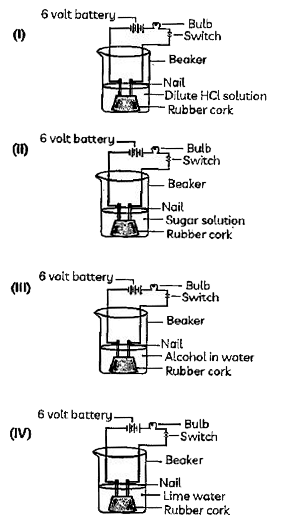 A(I) and (II)B(I) and (IV)C(II), (III) and (lV)D(I), (II) and (IV)
A(I) and (II)B(I) and (IV)C(II), (III) and (lV)D(I), (II) and (IV)In which of these circuits will the bulb glow?
A B
B C
C D
D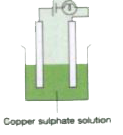

Which of the following solutions will not make the bulb in Fig 14.2 glow?
View SolutionObserve the following circuits carefully. In which circuit will the bulb glow. Write ‘Yes’ or ‘No’ in the blank space provided along each of the circuit given in Fig. 14.6
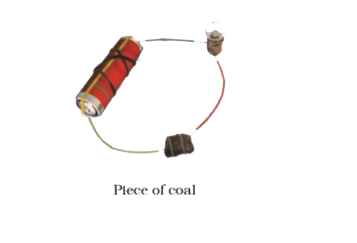
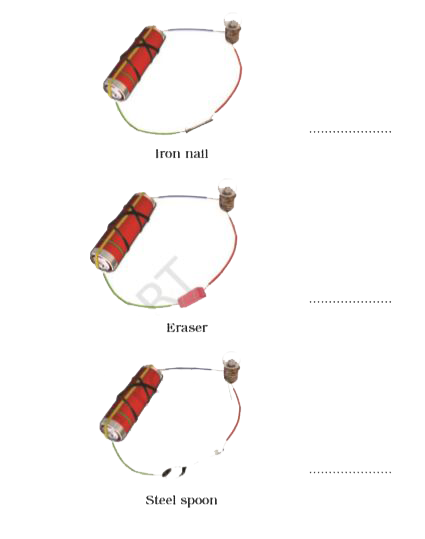
View SolutionThe schematic diagram of an open circuit is shown in the given figure.

Which of the following objects is inserted tightly in the gap to make the bulb glow?
View SolutionThe schematic diagram of an open circuit is shown in the given figure.
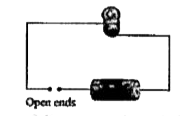
Opa ends Which of the following objects is inserted tightly in the gap to make the bulb glow?
View Solution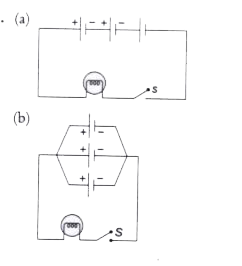

In which of the circuits given above does the bulbs glow brighter? (Assume that all bulbs and cells are identical)
View Solution
